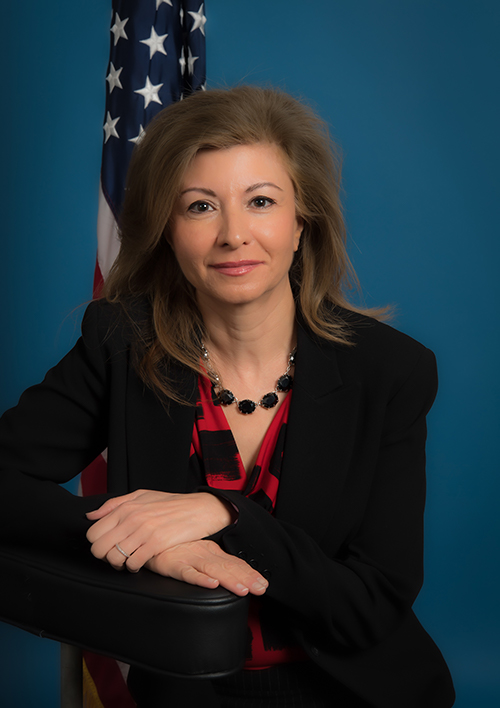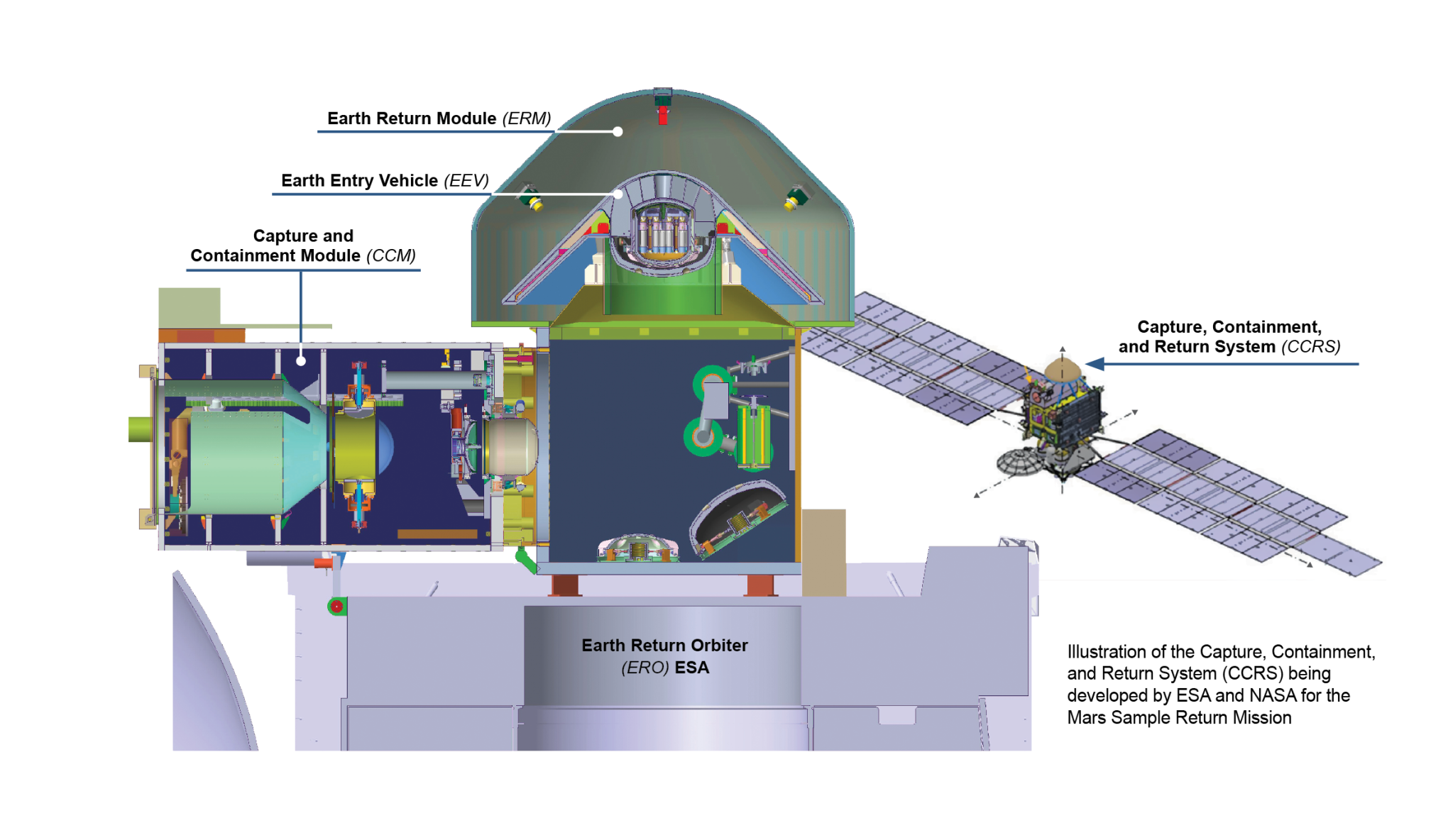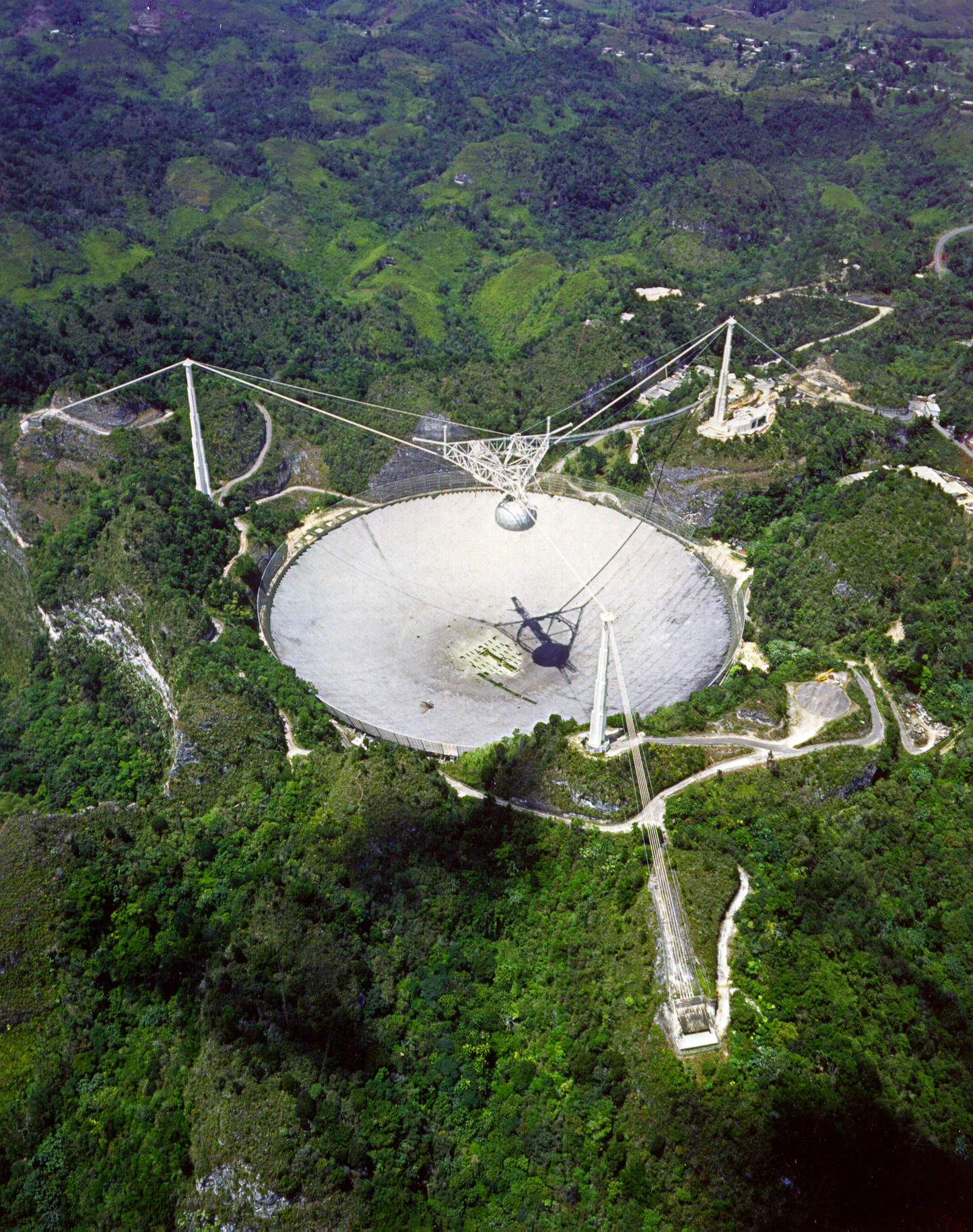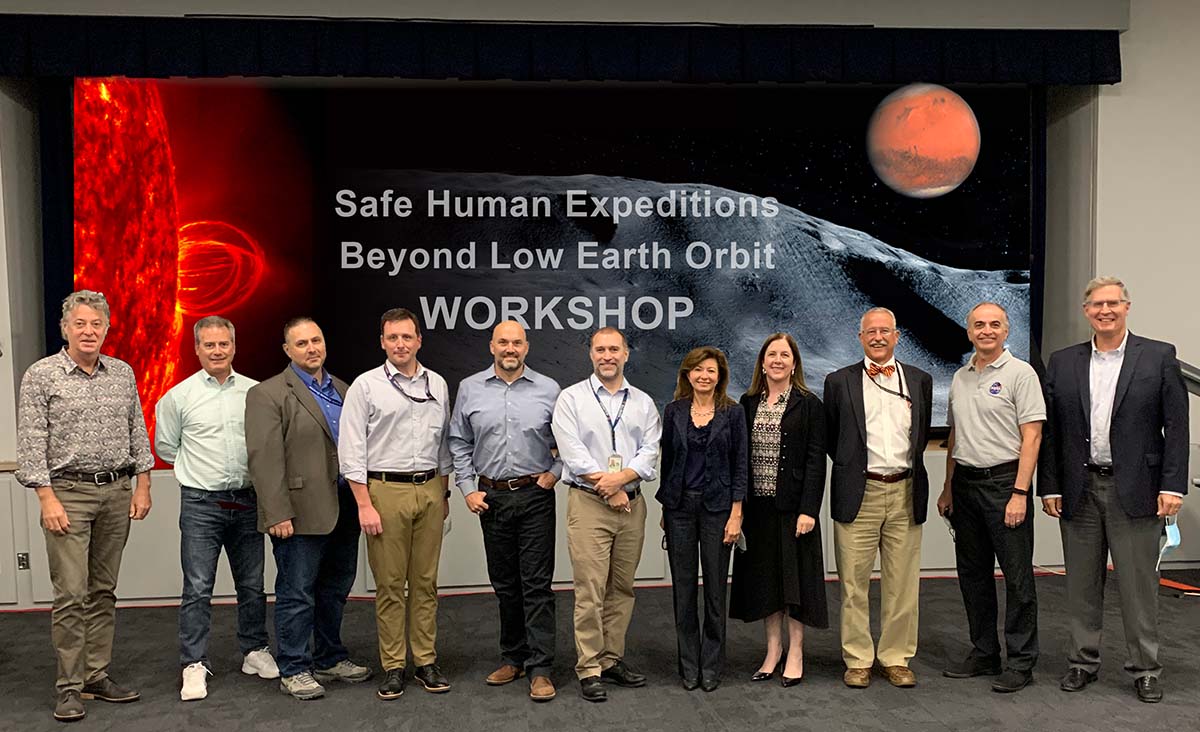This article is from the 2021 NESC Technical Update.
Selected as the NESC’s new Chief Scientist in February 2020, Dr. Azita Valinia builds bridges between the science and engineering communities at NASA.
“Scientists and engineers have different cultures, and fortunately I understand both communities well through my past experience.” – Dr. Azita Valinia, NESC Chief Scientist
“Scientists and engineers have different cultures, and fortunately I understand both communities well through my past experience,” said Dr. Valinia, an astrophysicist and 20-year NASA veteran of Earth and space sciences research, technology development, engineering, and space science mission management. As the architect of many interdisciplinary NASA programs, such as the Science Engineering Collaboration Program and the Research Engineering Program at NASA GSFC, she plans to build on that success to foster additional collaborations, and cross-pollinate the two communities to learn from each other’s best practices, and bring more awareness to the role that the NESC plays in ensuring scientific flight project success.
But in March 2020, the global pandemic hit the U.S. and building bridges and relationships became a strictly virtual endeavor. It significantly changed how she conducted business but did not change her primary objectives as NESC Chief Scientist: to become the NESC liaison to the science community and serve as an architect for interdisciplinary science-engineering collaborations.
During the first few months of her tenure, Dr. Valinia poured over NESC documents, reviewing technical discipline capabilities and NESC’s support of NASA’s science missions such as Hubble, JWST, Kepler, LISA, SMAP, CYGNSS, DSCOVR, ICESat-II, JPSS, and NISAR. She gave talks at science and technology conferences (virtually) and wrote technical articles on the role of the NESC in advancing NASA’s scientific missions. With an ear open to the current needs and requirements coming out of the NASA science programs and projects, she found opportunities to make connections and brought NESC experts to the table to help those projects solve challenging technical issues. “Many of the best tools and innovative practices developed within the science and engineering communities stay inside the silos surrounding those communities. That’s where I think I can help by breaking down the silos and have the lessons learned shared and applied to different communities,” she said.
One opportunity came with the Capture, Containment, and Return System (CCRS) Project of the Mars Sample Return Program. “They had extreme back planetary protection requirements for bringing a sample with organic material back to Earth. I learned they have a significant amount of micrometeoroid and orbital debris (MMOD) risk associated with that project.” Acting as a liaison, she facilitated the link up of the Mars CCRS team and an NESC Principal Engineer with extensive MMOD expertise. The NESC is currently providing technical expertise to assess MMOD risk for CCRS and provide mitigation strategies.
“Those are ways to bring these two cultures together, the Human Exploration and Operations community and the Science Mission Directorate’s flight projects, to start them talking and exchanging ideas. The more I know about the NESC, the easier it will be for me to make these connections at other organizations at the Agency.”
Dr. Valinia recently coordinated the efforts of the NESC technical team that was called upon to assist with the failure investigation of the Arecibo Observatory. She also served as the liaison to the Arecibo managing organization, the University of Central Florida, and the National Science Foundation, who owns the observatory. The NESC assessment determined the most probable contributing factors to the initial auxiliary socket failure, which was followed by a number of cascading events that resulted in the eventual collapse of the observatory. Unfortunately, the observatory collapsed before recovery efforts took place. “But we all learned from it, and the NESC work has now resulted in an NESC Technical Bulletin, engineering report, and technical journal articles informing the civil engineering community of the cause of the initial socket failure. And the NESC’s work has been crucial to informing future observatory structural designs.”
“The other role I’m focusing on is to promote NASA interdisciplinary initiatives to maximize mission success and safety.” To that end, she launched the NESC study, Safe Human Expedition Beyond Low Earth Orbit (LEO). “It brings together the science, engineering, technology, and human research (medical) communities to find innovative engineering solutions that minimize risk to human health for these deep, long duration expeditions. There are three main hazards we are focusing on in this study associated with human risks: radiation exposure, microgravity exposure, and inadequate human systems integration architecture,” she said. For example, at Mars, because of communication time delay, a ground crew cannot immediately assist with resolving technical problems. “We have to replace the 100 people in mission control with a crew of 2 to 4. That explains the degree of difficulty. To do that smartly, we have to have human systems that incorporate autonomy and artificial intelligence into those architectures so that the crew can solve their problems on their own without having to wait to hear back from Earth.”
Dr. Valinia and Dr. J.D. Polk, the NASA Chief Health and Medical Officer, along with Dr. David Francisco, organized and co-chaired the “Safe Human Expeditions Beyond LEO” workshop in the Fall of 2021 to gain diverse inputs from a broad spectrum of potential stakeholders for the NESC study. Successfully building a virtual (interdisciplinary) study team of 40 members from across NASA, she is pleased with the collaboration that has resulted. “I think results will be impactful when we work together for common goals,” she said.
Dr. Valinia is excited to work with the NESC, pushing the frontiers of engineering toward finding solutions to challenging technical problems. For her, there is never a dull moment. “I feel privileged and honored to have the opportunity to work with some of the brightest minds and dedicated people at the NESC. It’s a thrill. I can’t wait to get back on site and meet them in person!”


































